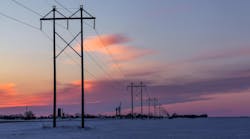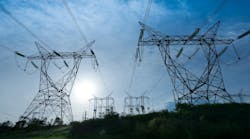The California Public Utilities Commission (CPUC) approved Southern California Edison’s (SCE’s) Petition to Modify the company’s application to build the Devers Palo Verde2 (DPV2) Transmission Line project in California.
The 128-mi, 500-kV transmission line will connect SCE’s Devers Substation near Palm Springs to the company’s proposed Midpoint switchyard near Blythe, CA. Additionally, SCE will build a 42-mi, 500-kV transmission line between the Devers Substation and its Valley Substation in Riverside County as part of the project.
When completed, DPV2 will allow the transfer of an additional 1,200 MW of power from the Blythe area in Riverside County to energy customers in Southern California. This is enough electricity to supply about 780,000 typical homes. Representative of the transmission upgrades necessary to strengthen the transmission system in the western United States, it will also reduce energy congestion within a nationally designated, critical electricity corridor.
Les Starck, SCE vice president, Local Public Affairs, said that the CPUC decision to approve the company’s Petition to Modify is a positive and necessary action toward building needed electric transmission facilities. “This favorable decision from the CPUC is an important step in SCE’s ongoing efforts to strengthen the transmission grid in California,” Starck said. “DPV2 and other transmission projects on which we are working are needed to strengthen service reliability and improve the grid’s ability to transmit electricity from new generating sources such as planned renewable energy projects.”
The DPV2 project will provide the capability to meet generation developers’ request for interconnecting new renewable and conventional generation projects in the solar energy rich areas of Southeastern California. By providing these developers with the earliest possible means to access markets in California, Arizona and other states in the Western region, construction of DPV2 will support these states’ efforts to meet their respective renewable portfolio targets.
The California portion of the project currently is expected to be placed in service in 2013, subject to licensing and regulatory approvals.
As originally proposed in January 2007, DPV2 included transmission line segments and related facilities from Romoland, CA to the Palo Verde area west of Phoenix, Ariz. The modified project will end at the proposed Midpoint switchyard near Blythe, Calif. The CPUC approved the entire proposed project, but in June 2007 the Arizona Corporation Commission (ACC) denied the Arizona portion of the project. In May 2009, SCE informed the ACC that the utility’s updated analysis of the project indicated that the benefits of the Arizona portion for California customers had substantially declined. Current studies confirm these results and do not support SCE’s pursuit of the Arizona segment of DPV2 at this time.
The CPUC decision authorizing construction of the California portion of the DPV2 project is contingent upon approval by the California Independent System Operator (Cal-ISO).

